What is a Make and Break Relay Switch?
This post highlights the Make and Break switch relays covered in the range of auto electrical products at Arc Components Limited. The relays supplied in-store are configured to DIN 72552 terminal standardisation, and examples can be found in the "Switch Relay" section.
What is a Mak -and Break relay?
The most common Make and Break relays are produced to switch a single feed line (usually positive) to power a section of a circuit. The relay is switched manually via a toggle/push switch or remotely through the circuit. A simple 'single line switch' is achieved by switching a line input from terminal 30 to 87 (indicated by the 'thick set' Black lines on the diagrams below), that 'Makes' or 'Breaks' once the coil has been energised by current, activating the coil via terminals 85 and 86, which can be swapped for energising in some applications if suppression (for example a diode) is not present.
Many configurations of a Make and Break relays are used for automotive electrical circuit switching, each allowing a variation on the switch operation; versions include "Normally Open" (NO) or "Normally Closed" (NC) operation, fused and line suppression.
Typical builds are:
- Single line Make and Break relay: as described above.
- Fused Make and Break relay: internally configured between 30 and 87 to accommodate a replaceable fuse.
- Make and Break relays with diode: used for suppressing coil voltage spikes, 85 and 86 terminals become polarity sensitive; 86 must remain positive if the diode tracks according to the diagram example below.
- Make and Break relay with a Resistor: used for a more reliable suppressing of coil voltage spikes, 85 and 86 can be swapped for coil energising in some instances as the terminals do not become polarity sensitive.
- Double Make and Break relay: allowing switching of two outputs simultaneously (utilising 87b as a second output line).
Relay Coil - Positive and Negative Coil Energising by DIN 72552 Definition.
| Terminal or Contact | Identification |
|---|---|
| 85 | Relay coil - Negative. |
| 86 | Relay coil - Positive. |
Relay Contacts - Line Feed or Switching by DIN 72552 Definition.
| Terminal or Contact | Identification |
|---|---|
| 87 | Common contact. |
| 87a | Normally Closed contact. |
| 87b | Normally Open contact. |
| 88 | Common contact 2. |
| 88a | Normally Closed contact 2. |
| 88b | Normally Open contact 2. |
| 30 | Feed or line in - Positive. |
Examples of Make and Break Relays:
| Standard Make and Break (NO) | Standard Make and Break (NC) | Double Make and Break |
|---|---|---|
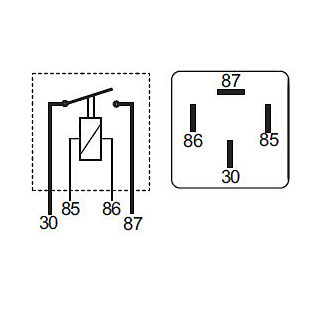 | 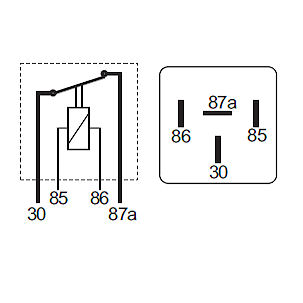 | 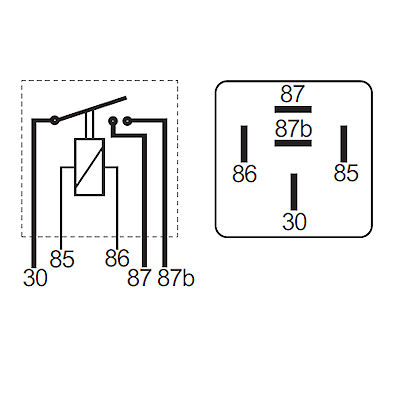 |
| Make and Break with Diode | Make and Break with Resistor | Fused Make and Break |
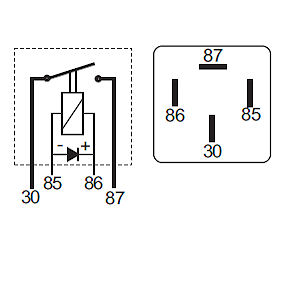 | 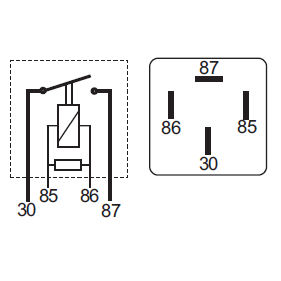 | 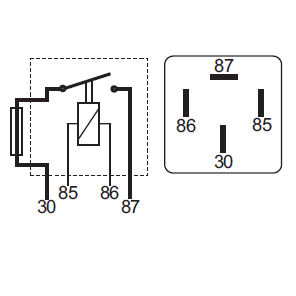 |
Start browsing for your Auto Electrical parts: Here.